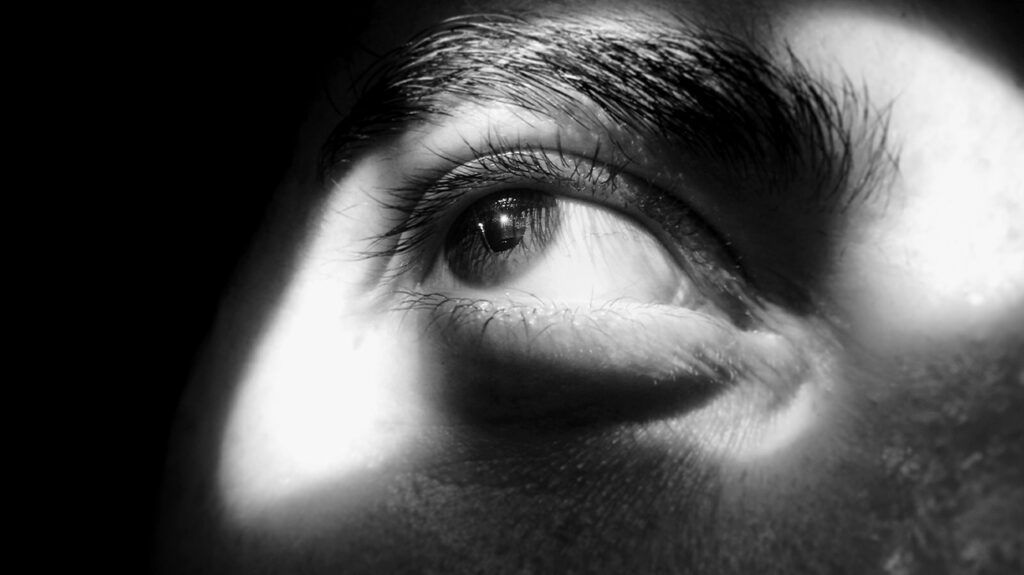There are four stages to epiretinal membranes (ERMs). ERMs may gradually worsen as they progress through the stages, with the fourth stage presenting a greater likelihood of vision loss.
An epiretinal membrane (ERM) is a semitranslucent membrane that forms on the retina’s inner surface — the layer of cells at the back of the eye that enable vision.
Other names for an ERM include “cellophane maculopathy” and “macular pucker.”
Although symptoms can worsen as a person progresses through the stages, some ERMs remain stable and asymptomatic, meaning they do not require treatment.
This article describes an ERM, outlines its different stages, looks at prevention methods, and more.

An epiretinal membrane (ERM) is a semitranslucent membrane of cells and fibers that forms on the retina’s inner surface.
As the American Academy of Ophthalmology (AAO) explains, the retina is the layer of light-sensitive cells that line the back of the eye. These cells detect light and send signals to the brain, enabling a person to see.
According to the American Society of Retinal Specialists (ASRS), ERMs occur due to a defect in the surface layer of the retina. This defect allows cells, called “glial cells,” to migrate through the retina and begin growing in a sheet across the retinal surface.
Over time, the membrane can contract and pull on the retina, resulting in retinal puckering. This can lead to vision impairments.
In 2017, a team of scientists reviewed and analyzed optical coherence tomography (OCT) images of 194 eyes with ERMs.
Using these images, the scientists developed an ERM classification system featuring four distinct stages of the disease. They found visual acuity progressively declined through stages 1–4.
The four stages are outlined below.
Stage 1
Stage 1 ERM is the mildest form of the disease, in which the ERM is thin. As in a healthy eye, the different layers of the retina are easily distinguishable from one another, and the foveal depression also remains intact.
The fovea is a small depression in the central part of the macula, which is
Stage 2
In stage 2 ERM, the retinal layers remain distinguishable from one another, but there is a loss of the foveal depression.
There is also a widening of the outer nuclear layer (ONL) — the part of the retina that contains light-sensitive or “photoreceptor” cells, called rods and cones.
As the AAO explains, rods aid vision in low light conditions, while cones enable color vision and the ability to see fine details.
Stage 3
In stage 3 ERM, the retinal layers remain distinguishable from one another, but there are continuous ectopic inner foveal layers (CEIFLs) crossing the entire foveal area.
These are under-reflective, or hypo-reflective, and over-reflective, or hyperreflective, bands that extend across the fovea.
The 2017 study notes an association between CEIFLs and significant vision loss.
Stage 4
Stage 4 ERM is the most severe form of the disease in which the ERM is thick, and the different layers of the retina are now indistinguishable from one another. The CEIFLs also remain present.
The above issues indicate a greater likelihood of vision loss.
According to the ASRS, ERMs can slowly progress, leading to a vague visual distortion that people may notice more when closing their unaffected eye.
A common symptom of progressing ERM is metamorphopsia, in which shapes appear distorted.
According to the ASRS, most ERMs remain stable following their initial growth and simply require routine monitoring. In people with rare cases, the ERM will spontaneously release from the retina, resolving vision problems.
The ASRS explains there are no medications or supplements to treat ERMs or prevent them from worsening.
For ERMs that require treatment, the only option is a surgical procedure called a vitrectomy. This involves making small incisions in the white of the affected eye, and replacing its vitreous gel with saline.
This enables the surgeon to access the surface of the retina, so they can then remove the ERM. Recovery from a vitrectomy typically takes around 3 months, though a return to unaffected vision may take up to a year.
Below are some answers to frequently asked questions about ERMs.
What is the new treatment for the epiretinal membrane?
Currently, the only effective treatment for an ERM is a vitrectomy, which involves accessing the surface of the retina and removing the ERM. However, this treatment is only necessary if the ERM significantly impairs a person’s vision.
When should you have surgery for an epiretinal membrane?
Doctors typically only recommend a vitrectomy for individuals who experience significant visual impairment or vision loss due to an ERM.
A vitrectomy carries a small risk of complications, such as:
- retinal detachments, which occur in approximately 1% of people undergoing this procedure
- infection, which occurs in approximately 1 in every 2,000 people
- an increased risk of a cataract in individuals who retain their natural lens
An epiretinal membrane is a membrane of cells and fibers that develops on the retina’s inner surface. It occurs when glial cells migrate through a defect in the retina and begin growing in a sheet across the retinal surface.
Most ERMs do not cause symptoms and thus, do not require treatment. However, scientists have discovered that ERMs can slowly progress through four stages and each subsequent stage presents an increased likelihood of vision problems.
The only way to ensure an ERM does not worsen is to undergo a surgical procedure called a vitrectomy. This procedure allows surgeons to access the retinal surface and remove the ERM.
Recovery usually occurs within 3 months, though it may take longer to completely restore vision.
